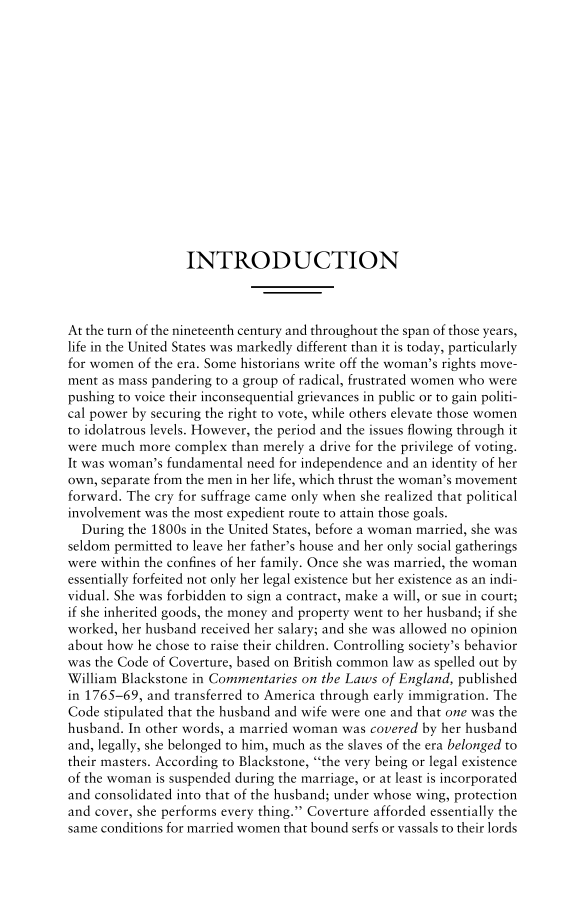INTRODUCTION At the turn of the nineteenth century and throughout the span of those years, life in the United States was markedly different than it is today, particularly for women of the era. Some historians write off the woman’s rights move- ment as mass pandering to a group of radical, frustrated women who were pushing to voice their inconsequential grievances in public or to gain politi- cal power by securing the right to vote, while others elevate those women to idolatrous levels. However, the period and the issues flowing through it were much more complex than merely a drive for the privilege of voting. It was woman’s fundamental need for independence and an identity of her own, separate from the men in her life, which thrust the woman’s movement forward. The cry for suffrage came only when she realized that political involvement was the most expedient route to attain those goals. During the 1800s in the United States, before a woman married, she was seldom permitted to leave her father’s house and her only social gatherings were within the confines of her family. Once she was married, the woman essentially forfeited not only her legal existence but her existence as an indi- vidual. She was forbidden to sign a contract, make a will, or sue in court if she inherited goods, the money and property went to her husband if she worked, her husband received her salary and she was allowed no opinion about how he chose to raise their children. Controlling society’s behavior was the Code of Coverture, based on British common law as spelled out by William Blackstone in Commentaries on the Laws of England, published in 1765–69, and transferred to America through early immigration. The Code stipulated that the husband and wife were one and that one was the husband. In other words, a married woman was covered by her husband and, legally, she belonged to him, much as the slaves of the era belonged to their masters. According to Blackstone, ‘‘the very being or legal existence of the woman is suspended during the marriage, or at least is incorporated and consolidated into that of the husband under whose wing, protection and cover, she performs every thing.’’ Coverture afforded essentially the same conditions for married women that bound serfs or vassals to their lords
Document Details My Account Print multiple pages
Print
You have printed 0 times in the last 24 hours.
Your print count will reset on at .
You may print 0 more time(s) before then.
You may print a maximum of 0 pages at a time.






























































































































































































































































